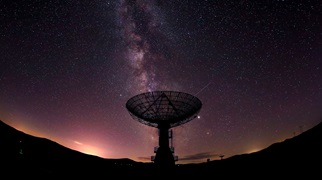Abstract
In a previous article1, the author outlined recent trends in government and private entity activities in outer space and provided an overview of how those activities may give rise to various challenges and opportunities in a restructuring and insolvency context.
The article was the first in a series of space-themed pieces intended to launch a global conversation highlighting the economic benefit of outer space activities, and the importance of having in place clear, consistent and effective international legal rights, obligations and norms to incentivise ongoing innovation and returns from a genuine ‘space economy’.
The first article provided an overview of recent international investments and growth in outer space activities, while also drawing attention to how inconsistency concerning the treatment of property rights and liabilities in space under international law may lead to increased complexity and disputes that could undermine efficiency and maximized returns in both an insolvency and broader economic context.
In this next article in the space-themed series, the economic and legal analysis of outer space activities is continued – this time focusing on how private entities are now driving the commercialisation of outer space, and how this can serve as a pillar of future economic growth on a global scale. It is also considered how, in the context of underdeveloped international regulations and norms governing outer space activities, the adoption of a uniform securities framework can incentivise further investment and support continued innovation and technological development that will underpin a new commercial ‘space race’.
Introduction
The scale of commercial activity in outer space is expanding significantly, combining with artificial intelligence, robotics, remote operations and other technological capability and connectivity to offer opportunities from digital mapping and resource discovery to enhanced communications, remote health services and resource and environmental management, as well as emerging potential in space mining and engineering. Indeed, in March 2022, the European Space Agency (ESA) announced that it would launch a new mission to Jupiter, to be called ‘Juice’
2, in April 2023, joining the Juno spacecraft of the United States National Aeronautics and Space Administration (NASA) which is currently orbiting the planet. The ESA and NASA initiatives are of particular significance given the scientifically-recognised potential for Jupiter to support habitable life with the benefit of plentiful water and other resources beneath the planet’s icy crust.
The initial escalation of space law activity in the decades after the Second World War focused primarily on exploration, in part designed to demonstrate ‘superpower status’ in the midst of the Cold War tussle between the United States and the then-USSR, and saw Neil Armstrong become the first human to step foot on the Moon in 1969 Now, though, there has been a shift towards commercial space enterprises and activities. With an investment of more than USD $350 billion each year, we are now seeing the genuine commercialisation of outer space. Activities in outer space are no longer ‘out there’ at all – they are very much here and now and play a major part in our everyday lives. Indeed, space activities have the potential to deliver measurable improvements in efficiency, innovation and economic growth and to also pave the way for better outcomes for public health, equality and standards of living across the globe.
This shift has been assisted by three trends: rapid digitisation and technological development which has enhanced the scale and potential of outer space activities such as satellite communications and imagery and deep space mining and engineering; a ‘start up investment’ culture which has helped to fuel innovation and fund new activities in novel areas; and finally climate change and population growth, in the sense that there is now a clearer and more direct realisation that the Earth’s resources are limited and the discovery of new resources in outer space could relieve many of the pressures the world is currently facing.
This article explores the key developments in outer space commercial activity in recent years, before turning to the challenges this poses for an international regulatory environment which is currently lacking in uniform, consistent and ascertainable rights and obligations in connection with outer space activities. In that context, the particular focus of the article is the under-developed international framework for securities and insolvency-related rights in outer space, and the impediments this may cause for ongoing funding opportunities for space activities. It is suggested that the adoption of the Space Law Protocol – a dormant international instrument created under the auspices of the International Institute for the Unification of Private Law (UNIDROIT) – would serve as the critical underpinning to secure ongoing funding for the innovation and technology-based initiatives from private enterprises that drive commercial opportunities and public benefits from outer space activities.
The commercialisation of outer space: Key activities and trends
In its last full reported annual figures, Space Foundation – a not-for-profit organisation dedicated to education, information sharing and collaboration to support space exploration and space-inspired industries – found that in 2020 the global space economy rose to USD $447 billion, an increase of 4.4% from USD $428 billion in 2019 and an increase of 55% from a decade ago. Commercial space activity grew 6.6% to nearly $357 billion in 2020, representing close to 80% of the total space economy.3
Morgan Stanley estimates that the global space industry could generate revenue of more than USD $1 trillion or more in 2040, up from USD $350 billion currently.4
Satellite-based activities are a particular commercial focus in this new ‘space race’. Strong competition among commercial space launch service providers, as well financial support from governments globally, has meant that more and more private entities have been able to launch satellites (as well as other spacecraft) into space, with the cost of ‘access to space’ at an all-time low.
One of the most immediately measurable impacts of this trend comes in the form of advancements in the capability of low orbit space satellites, which are directly responsible for leveraging innovative communications technologies to improve access to broadband services and online healthcare and consultations in remote regions and communities, as well more accurate weather and extreme event forecasting.
Further, embedded satellite-based quantum key distribution technology is helping to deliver more secure communications networks. This is an important public policy priority given the global focus on enhanced cybersecurity practices to combat malicious attacks that can devastate public and private sector entities – shutting down operations, compromising intellectual property and other assets and causing data leakages and privacy breaches.
All of these enhancements in satellite capability deliver – beyond economic growth – substantial improvements in public health and living standards and can help to achieve greater equality both within individual nations and between developed and developing nations.
An example of the competition among commercial entities in this context is the rival projects of Amazon, which is continuing to progress its Project Kuiper satellite internet program that will see over 3,200 internet satellites launched into low Earth orbit, and Space X’s Starlink satellite internet network (supported by Microsoft in facilitating access to its Azure cloud computing technology), intended to build an interconnected network of 12,000 satellites in low orbit Earth. Both projects are designed to deliver high-speed internet to anywhere on the planet.
Beyond these readily measurable public benefits, a number of entities globally have developed capabilities to use satellites in outer space – equipped with cutting edge optimal communications, remote sensor technologies, thermal imaging, artificial intelligence and spectral analysis – to digitally map, measure and monitor data relevant to agriculture, mining and resource management. These technologies are also being used by entities such as Exploration Mapping Group in the United States to discover new deposits of mineral resources, operating in conjunction with exploration geologists and reducing the damaging environmental impact of direct drilling on the Earth’s surface.
In Australia, a consortium known as the Australian Remote Operations for Space and Earth (AROSE), consisting of private sector companies, government agencies and university and research organisations, is helping to develop the technology used in these kinds of outer space activities. One current focus is making available the world-leading robotics and automation technology that exists in Australia’s mining and resources sector to develop remote operations capabilities for satellites that can be used to relay critical information to global enterprises, as well as to support future space mining and exploration activities. In February 2022, Rio Tinto joined AROSE and pledged to make available its remote operations technology to strengthen Australia’s position as a key partner in outer space activities. This is expected to open the door to future international collaboration and to create investment opportunities in infrastructure to support Australia becoming a global base for ground stations and satellite operations.
In the context of space mining, Maxar Technologies in the United States is supplying robotics technology to support new commercial and government programs in outer space which rely on the technology to dig, drill, sample and explore planetary and celestial surfaces and objects.
While space mining remains in a speculative phase, government-backed funding initiatives continue to support ongoing investment. For example, in 2020, NASA awarded contracts to four companies to extract small amounts of lunar regolith from the surface of the Moon by 2024. The investment is intended to herald a new era of commercial space mining, with the United States Government also actively investing in and partnering with private enterprises to fast-track technological and infrastructure capability to support mining in outer space. These initiatives build on the ongoing technological and scientific work being pursued by United States private enterprises Planetary Resources and Deep Space Industries to target asteroid mining in the next five years.
In that capacity, rocket companies such as Gilmour Space Technologies in Australia are also pivoting their operations to develop launch vehicles capable of taking autonomous mining equipment to the surface of the Moon, Mars and asteroids over the next five to eight years.
Apart from space mining, there is also a major role for companies such as global operator Saber Astronautics to develop technology including machine learning solutions and robotics to monitor, assess and ensure the ongoing maintenance and refuelling of satellites in orbit. There are significant public and private interests at stake in that context. Indeed, the ESA reports that, as of April 2022, there are around one million space debris objects ranging from one centimetre to 10 centimetres in size, and 36,500 objects greater than 10 centimetres orbiting the Earth, including 5,400 functioning satellites and 2,900 defunct satellites.5 Space debris can travel at a speed of around 40,000 kilometres per hour, and the potential for a catastrophic collision with ‘live’ satellites and other space equipment, as well as active human missions, has been identified as an area of major concern by the World Economic Forum.6
International regulatory frameworks: Existing gaps and the potential for cross-border disputes in the determination of rights and obligations in outer space
The expansion of commercial activities – and actors – in outer space in these and other continually novel and emerging areas raises a number of important regulatory issues.
Two of the regulatory issues most frequently identified in global discourse are collision liability and ownership rights. In this author’s previous article in this series,7 it was noted that:
- while the Outer Space Treaty8 and the Liability Convention9 provide for a liability framework in the event of a collision which causes damage to property in outer space, liability depends on an undefined notion of ‘fault’ and there are no direct enforcement remedies for private entities, which are currently driving commercial space activities rather than individual States; and
- the Outer Space Treaty does not explicitly extend to the regulation of the ownership rights of private entities in outer space. While there is a notion of ‘common ownership’ of resources acquired in outer space (relevant particularly for space mining and engineering activities) embodied in the Moon Agreement10, this is limited to resources acquired from the Moon and does not extend to resources acquired from other celestial bodies. A framework for the creation, recognition, priority and enforcement of ownership interests in outer space therefore remains outside the scope of any current international instrument.
The concern is that, rather than supporting the negotiation of additional international frameworks to provide a more comprehensive solution to these issues, individual States are now ‘going it alone’ and adopting their own local laws to incentivise commercial space activities by their own domestic private enterprises (as well as to support government-sponsored missions) – and to thereby contribute to local gross domestic product and future resource potential.
In relation to ownership rights, four nations – the United States, Luxembourg, the United Arab Emirates (UAE) and Japan – have now passed laws recognising the ability for private entities to acquire ownership rights over resources in outer space.
For example, the United States Commercial Space Launch Competitiveness Act 2015 provides that ‘a United States citizen engaged in commercial recovery of an asteroid resource or a space resource … shall be entitled to any asteroid resource or space resource obtained, including to possess, own, transport, use, and sell the asteroid resource or space resource obtained.’11
Luxembourg’s Law of 2017 on the Exploration and Use of Space Resources states in its first article that ‘space resources are capable of being appropriated’, thereby giving private entities a pathway to acquire ownership of the resources they extract from outer space.
The UAE’s National Space Law came into effect in December 2019 and also provides a legal framework which supports the exploitation and utilisation of space resources (upon obtaining a permit from the UAE Space Agency), operating in conjunction with the UAE’s National Space Policy and National Space Strategy 2030. One of the express objects of the National Space Law is to stimulate investment and encourage private sector participation in space sector activities.12
And most recently, in June 2021 Japan passed the Law Concerning the Promotion of Business Activities Related to the Exploration and Development of Space Resources. The Law provides Japanese entities with permission to prospect for, extract and use various space resources upon obtaining permission from the Japanese Government.
The problem with local laws of this nature is that they create the inevitable prospect of conflicts between different laws across jurisdictions in the context of a crowded outer space environment consisting of actors from regions right across the world. This cuts directly across the goals of harmonisation, commonality and mutual cooperation and recognition in international law. This may be a precursor to cross-border disputes, between both States and private entities, and it may be that international arbitral frameworks are relied on to achieve a resolution to those disputes.
The particular tension in relation to ownership rights is the Outer Space Treaty, which provides in Article II that ‘outer space’ is not ‘subject to national appropriation by claim of sovereignty, by means of use or occupation, or by any other means’. The international community is divided on whether the United States, Luxembourg, UAE and Japanese laws infringe that proscription. Some take the view that Article II does not prohibit private entities from obtaining ownership rights over assets acquired from outer space (such as in the course of space mining activities) due to the application of the Lotus principle – that is, what is not explicitly prohibited is permitted. Others take the view that the passage of legislation providing for the acquisition of ownership rights in outer space assets by private entities is a way in which States have necessarily asserted sovereignty in direct violation of Article II of the Outer Space Treaty.
This sets the scene for future disputes over ownership rights by States and private entities in outer space, and there is a clear need for an explicit and certain ownership regime in a revitalised international space law instrument.
Focus point: The need for a securities and insolvency framework for outer space activities
Another regulatory issue that has received less attention in the context of the advancement of commercial activities in outer space is the current lack of an international framework for securities and insolvency rights.
The issue assumes major importance with the commercialisation of outer space activities because those activities, as noted, are very often pursued by start-up firms which require new finance to operate. Likewise, space activities conducted by existing commercial entities require equity and debt finance to fund new activities outside the ordinary course of existing business operations.
A key point emerges from this – creditors, to continue to provide financing, need to be assured that any security they take to support loans over physical equipment as well as potentially property acquired from outer space (such as water and mining deposits) is recognised by way of priority and is supported by clear enforcement rights and remedies. This is particularly the case given the greater insolvency risk in the context of space activities due to the involvement of start-up enterprises as well as more speculative activities such as space mining and engineering.
There is accordingly a strong incentive to have in place a uniform, certain framework for securities and insolvency rights internationally – because without a viable space financing market, continued advancement in space activities and the achievement of related economic growth and other public benefits will be compromised.
There is in fact an existing international instrument which could serve as an effective securities and insolvency framework in outer space: the Space Protocol to the Cape Town Convention on International Interests in Mobile Equipment (Space Protocol). The Space Protocol has been dormant for the last 10 years, having never achieved the required ratifications from States to come into force.
The Cape Town Convention itself establishes an international legal regime for the creation, enforcement, registration and priority of international interests in various categories of high-value, uniquely identifiable mobile equipment. It entered into force on 1 March 2006, and as at April 2022 had been ratified or acceded to by 83 States.
Unlike the Space Protocol, another protocol adopted under the Cape Town Convention which applies in a different asset-specific context, aircraft equipment, has come into force. It did so on the same date as the Cape Town Convention, having been ratified by nine States by that time. The Space Protocol, in contrast, only been signed by (but not ratified by or acceded to) four States – Germany, Saudi Arabia, Zimbabwe and Burkina Faso.
The Space Protocol, operating in conjunction with the Cape Town Convention, sets out a uniform regulatory regime for the creation, recognition, protection and enforcement of security interests in space assets. It is intended to essentially function as the basis for an international secured transactions law designed specifically for the space industry – harmonising registration, priority, transfer and insolvency rights to avoid conflict of laws issues and potentially costly disputes.
By protecting the security interests of creditors in this manner – providing creditors with transparency, certainty and predictability in relation to their rights – the flow-on effect is that there is a reduced risk of lending to fund activities that make use of space assets. This, as a result, encourages the continued flow of capital from lenders, and reduces the cost of credit which is advanced in the space industry for commercial enterprises engaging in those activities.
The primary features of the Space Protocol are:
- the creation of internationally-recognised security interests in ‘space assets’, including satellites, space vehicles, spacecraft, telecommunications, scientific, navigation and observation networks and instruments, and other parts and equipment; 16
- a system for the assignment of rights by a debtor as a form of security, designed to support asset-based financing arrangements; 17
- the establishment of an electronic international registry for the registration of international security interests in space assets, which gives notice of the existence of those interests to third parties and enables a first registered party to preserve its priority (through perfection) against later registered interests as well as against unregistered interests and creditors in the event of default.18 This is very similar to the personal property securities legislation established for domestic securities over personal property in jurisdictions such as the United States, Canada, New Zealand and Australia; and
- providing creditors with a range of basic default and insolvency-related remedies and a process for obtaining speedy relief pending final determination of claims on the merits. These include taking control of assets charged, selling or leasing assets, and receiving income or profit from the management or use of a seized asset.
In an insolvency context, the Space Protocol is distinct from another international instrument which is the basis for mutual recognition and cooperation in cross-border insolvency and restructuring, the UNCITRAL Model Law on Cross-Border Insolvency (Model Law). Unlike the Model Law, the Space Protocol, and the Cape Town Convention itself, set out the actual substantive law that can be resorted to by secured creditors in the event of an insolvency (or other) default.
A clear and certain international framework for securities and insolvency rights such as that set out in the Space Protocol is at the heart of the development and sustainability of a distinct space financing market globally – thereby facilitating the flow of funds from creditors across the world (whether separately or as part of a consortium) to a greater number of enterprises in the commercial space sector. This is a necessary adjunct to solely equity finance from capital raising which will not always be available or attractive for all entities undertaking space activities. As aptly noted in the Introduction to the Space Protocol, its adoption would ‘help bring much-needed financial resources to the NewSpace community, namely those small start-up companies that have emerged as a result of the booming commercial space sector.’
Concluding remarks
While the commercial space industry is booming, to see further advancements in space capability and the achievement of economic growth and other measurable public benefits globally, there is a need for a comprehensive international framework dealing with ownership rights and collision liability.
It is also critical to have in place a strong space finance market underpinned by a coherent regulatory system of securities and insolvency laws. The adoption of the Space Protocol is central to achieving that end and the ongoing efforts of UNIDROIT to encourage the adoption and implementation of the Space Protocol are to be applauded.
As the World Economic Forum identifies in its Global Risks Report 2022, with an increasingly ‘crowded and competitive’ market in outer space commercial activities from enterprises across the globe, many of which are now able to support their own launch capabilities beyond State-sponsored measures, there is a need for specific and functional formal multilateral agreements regulating outer space rights and obligations – as distinct from a norms-based approach consisting of voluntary measures that are not legally binding.
But in the context of ongoing geopolitical tensions – with multilateralism under immense strain due to ongoing economic and public health uncertainty after two years of a global pandemic, as well as the war in the Ukraine and the impasse on climate change – and record government investments in competitive and protectionist outer space exploration programs seen as a pillar of future domestic economic growth and security, mutual cooperation may be some time away.



























